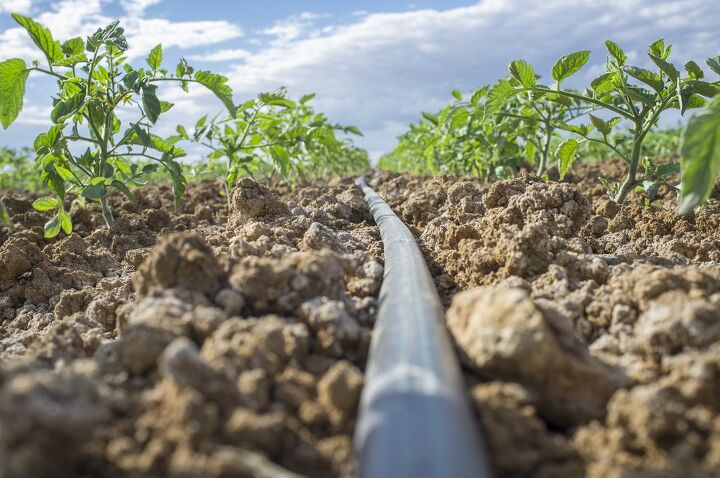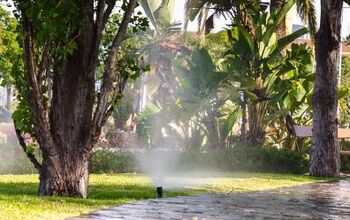SDR 21 Vs. Schedule 40 Pipes: What Are The Major Differences?

You have finally decided to bite the bullet and install that long-awaited irrigation system in your lawn. You are ready to order your materials and the supply house salesman throws you a curve. Do you want SDR21 or Schedule 40 pipe? What is the difference, and how do you tell?
SDR 21 pipe is a high-density polyethylene or polyvinyl chloride product designed for potable and irrigation water systems. Schedule 40 PVC is a polyvinyl chloride product typically used for pressurized and heater water systems. Both the SDR rating and the Schedule rating of pipe are ratios of the pipe’s wall thickness and outside diameter.
There are many other considerations when choosing the types and rating of the pipe for your irrigation system. SDR 21 and Schedule 40 PVC pipe are generally comparable in their applications. The major differences are in the pressure ratings and the dimensions of the pipe.
Do You Need to Hire a Plumber?
Get free, zero-commitment quotes from pro contractors near you.

SDR 21 Pipe – Not Sewer and Drain
Contrary to what many people believe, including some of the employees of your local big-box hardware store, SDR does not stand for Sewer and Drain. Instead, SDR is an acronym for Standard Dimension Ratio. The pipe industry created this system to be more flexible and adaptable than the old schedule rating.
The SDR is a rating for pressure pipework. The lower the pressure rating on the pipe, the higher the SDR. Typically, the pipe’s pressure rating is measured in pounds per square inch. In practice, the minimum outside diameter of SDR 21 pipe is 21 times the wall thickness. Most PVC SDR 21 pipes create a pressure rating of 200 pounds per square inch.
This chart shows the inside and outside pipe diameters and the wall thickness of common SDR 21 PVD pipe sizes to better understand the relationship of wall thickness to the outside diameter.
| Nominal Inside Diameter | Nominal Outside Diameter | Wall Thickness |
| 1 inch | 1.315 inch | .063 inch |
| 1.25 inch | 1.660 inch | .079 inch |
| 1.5 inch | 1.90 inch | .090 inch |
| 2 inch | 2.375 inch | .113 inch |
| 2.5 inch | 2.875 inch | .137 inch |
| 3 inch | 3.5 inch | .167 inch |
| 3.5 inch | 4.00 inch | .190 inch |
Common Uses for SDR 21 Pipe
SDR PVC pipe is commonly used in a variety of applications. Some of these applications include:
- Potable water supply systems
- Water Transmission Mainlines
- Pressurized sewage transmission mains
- Irrigation systems
- Oilfield saltwater disposal systems
Gravity-fed water and sewage systems often utilize SDR 21 pipe as well. Many water reclamation plants are plumbed with SDR 21 pipe.
Schedule Rated Pipe
Schedule rated pipe may be any number of materials. The old schedule rating system was used for ductile iron, steel, and PVC pipes. PVC pipe followed the same standard dimensions of ductile iron and steel pipe. The wall thickness of the pipe was the determining factor of the schedule rating.
Schedule 40 ratings follow this pattern up to diameters of ten inches. This means the pressure rating can vary depending on the diameter of the pipe. Typically, schedule 40 PVC pipe is rated for use in a system where water temperatures don’t exceed 140 degrees Fahrenheit.
To help you understand the complex nature of the schedule 40 rating system, this chart shows the relationship between pipe diameter, wall thickness, and pressure ratings.
| Nominal Inside Diameter | Nominal Outside Diameter | Nominal Wall Thickness | Max water pressure in PSI |
| 0.50 inch | .840 inch | ..109 inch | 600 PSI |
| 0.75 inch | 1.05 inch | .113 inch | 480 PSI |
| 1.00 inch | 1.315 inch | .133 inch | 450 PSI |
| 1.25 inch | 1.66 inch | .140 inch | 370 PSI |
| 1.50 inch | 1.9 inch | .145 inch | 330 PSI |
| 2.00 inch | 2.375 inch | .154 inch | 280 PSI |
| 2.50 inch | 2.875 inch | .203 inch | 300 PSI |
Schedule 40 PVC is commonly used in residential and commercial water systems and drainage systems. Many residential irrigation systems are installed with schedule 40 PVC pipes. However, Schedule 40 PVC pipe is more rigid than SDR 21. This can make SDR 21 more easily installed in some applications.
Are Schedule 40 and ADR 21 Fitting Interchangeable?
Unfortunately, no. Fittings for Schedule 40 PVC pipe and SDR 21 are not interchangeable. Instead, the different outside pipe diameters require fittings made especially for the pipe you use. Different methods of joining some sizes of SDR 21 piping make using it with PVC fitting impossible.
In general, PVC SDR 21 uses a bell and spigot jint. The bell is fitted with a gasket into which the spigot slips forming water and pressure tight fit. For underground installations, bell and spigot-type joints seem to be preferred. Much of this preference is due to the movement of the pipe underground. The pipe needs to expand and contract along its length to minimize the chance of damage and leaks.
PVC pipe is normally jointed with solvent welded joints creating a rigid structure. The rigidity of PVC pipe and these solvent welded joints can lead to problems with underground installations. The ground can create stress on the pipe and joints that can eventually lead to leaks or failures.
Some adapters can be used to join PVC pipes to SDR 21. However, they should not be used to adapt fitting. Conventional wisdom is to use the fittings manufactured to fit the pipe you are using.
Which is Better – PVC or SDR?
It isn’t that one type of PVC pipe is any better than another type. The major consideration is understanding the differences and the pros and cons of each type of PVC pipe for a particular application.
- Typically both types of pipe are made from the same product. This is referred to as Type I, Grade I compound, Cell classification 12454-B and referenced by ASTM-D 1784 (AKA 1120). Thus both pipes are made from the same PVC compound and should exhibit similar characteristics.
- Typically, Schedule 40 pipe has a thicker wall than SDR 21 pipe. This should make the schedule 40 pipe more tolerant of being buried and subjected to loading forces.
- SDR 21 typically has a thinner wall dimension making it more flexible and easier to install under some conditions. The less rigid structure also gives SDR 21 more resistance, where bending loads may affect the pipe.
- SDR 21 may be slightly quicker and easier to install in long runs because of the bell and spigot gasketed joints. Schedule 40 PVC requires welded joints which are more labor-intensive and require more skill to make correctly.
In the end, the choice of which type of PVC pipe you choose should be based on the characteristics of the pipe and the requirements of your job. It should be noted that local building codes may speak directly to which type of pipe you can use in a particular application.
SDR 21 or Schedule 40 for Irrigation
Overall, most irrigation specialists and installers still use schedule 4o PVC pipe. The thicker walls, more rigid structure and the availability of adapters and accessories for Schedule 40 pipe are behind some of this popularity. Thousands of feet of schedule 40 PVC pipes are installed every year in residential and commercial irrigation projects.
Schedule 40 also features a much higher pressure rating, in most instances, than SDR 21 because of the wall thickness. SDR 21 has a variable wall thickness and is typically rated at 200 pounds per square inch. Some smaller diameters of schedule 40 PVC pipe are rated to well over 400 pounds per square inch.
The irrigation industry still considers schedule 40 PVC pipe the choice for commercial and residential irrigation installations. There is no reason that schedule 40 PVC pipe shouldn’t serve the needs of your irrigation system just as well.
Do You Need to Hire a Plumber?
Get free, zero-commitment quotes from pro contractors near you.

Making the Right Choice of PVC Schedule 40 and SDR 21 Pipe
Regardless of which type of pipe you choose to use for your project, be sure to understand the requirements to properly install the pipe. Each type of pipe should serve you well, provided you understand the pros and cons. Do your homework, and then order your irrigation pipe and fittings confidently.

Dennis is a retired firefighter with an extensive background in construction, home improvement, and remodeling. He worked in the trades part-time while serving as an active firefighter. On his retirement, he started a remodeling and home repair business, which he ran for several years.
More by Dennis Howard













![10 Best Electric Pressure Washers – [2022 Reviews & Guide]](https://cdn-fastly.upgradedhome.com/media/2023/07/31/9070600/10-best-electric-pressure-washers-2022-reviews-guide.jpg?size=350x220)













